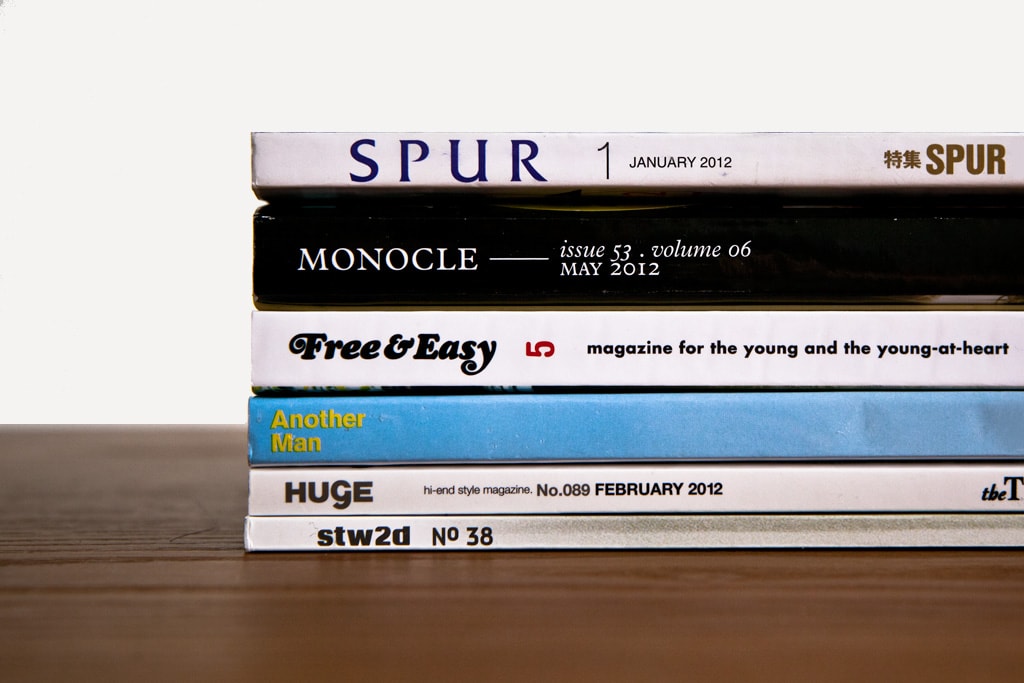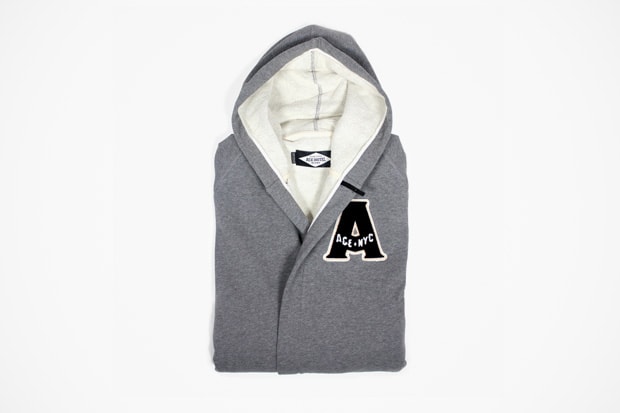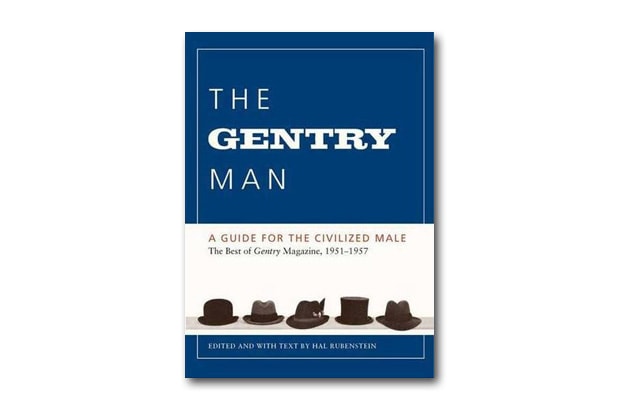Re(de)fining Print and the Resurgence of the Magazine
We’ve been observing the decline of print for a long time. Recently Encyclopedia Britannica

We’ve been observing the decline of print for a long time. Recently Encyclopedia Britannica officially stopped printing their sets of encyclopedias, and has dedicated themselves to the online medium. They’re now positioning their web presence as a more credible, and premium, source than the good ol’ speedy and free Wikipedia.
Print magazines have been facing a similar problem. They’ve been competing on the same two fronts Encyclopedia Britannica had: affordability, and reaction time. Print magazines have been trying to become more affordable to readers, and offset their costs by relying heavily on advertisers. It’s only USD $18 for a 3 year (30-issue) subscription for Esquire. Similarly, print can never keep up with how quickly websites get updated and how fast news gets published on the internet. Now, with the coming of e-ink and e-paper, print seems to be slowly fading away. Until a couple of weeks ago, I was on the same train of thought. I figured, hell, why would anyone in their right mind choose print any longer? It’s a dying medium. It’s more expensive, it’s less flexible in terms of distribution, and the market is still very saturated. Then I stumbled across PORT magazine.
HYPEBEAST was actually the one that led me to find PORT a while back, through one of Douglas Brundage’s op-ed pieces. There is an average of 1-2 print magazine launches every day. (Believe it or not, there were 715 just in 2008.) What makes PORT so special? For one thing, this one-year-old startup is competing with print tycoons such as GQ and New York magazine for the 47th SPD Magazine of the Year award.
Another thing I love about PORT is how careful it is about sharing great content. As put by editor and founder Dan Crowe in an interview to Protein, “The PORT reader is somebody who really enjoys food, movies, fashion, and poetry, and Curb Your Enthusiasm, and just all of those good things. But they’re not, in any way, on a high horse, at all.”
PORT is a part of a movement that does things a bit differently than most magazines do now. Let’s have a look at what could very likely be the future of men’s magazines.
Less Power to Advertising
The holy trinity of men’s magazines right now composes of Esquire, GQ, and Details. These three magazines are pretty similar: they are funded heavily by advertising, and so live through those restrictions. That’s also what makes them affordable.
Conversely, magazines like PORT, Monocle, and Bidoun run in the opposite direction (not to mention HERO, DAPPER DAN, Fantastic Man, American Way, and AnOther Man). They release fewer issues per year (one per quarter for PORT and Monocle, four issues for Bidoun, and their subscriptions cost a lot more than subscriptions to Esquire, GQ, and Details. PORT costs £24 GBP/year for 4 issues, compared to the previously mentioned Esquire’s $18 USD/3 years for 30 issues. Bidoun costs $55 USD/year for 4 issues.
PORT may have survived its first year, but Monocle is entering half a decade. An article from almost two years ago states, “…Monocle boasts a global circulation nearing 150,000, a 35 percent annual increase at a time when magazine sales are supposed to be going in the other direction, and a rising subscription base of 16,000. If that sounds small, consider that these individuals pay $150 for 10 issues, a 50 percent premium over the newsstand price.”
How are magazines like Monocle able to grow? Where traditional publishers see only competition in technology, these new magazines see a powerful ally. For example, Bidoun makes use of the wide reach and accessibility of the internet by making some of its full-length feature articles available for free. (Have a peek into their latest articles!) No downloads, no subscriptions, no e-mail addresses necessary; they’ve removed all friction so readers will find it very easy to sample their work.
There’s no need for Bidoun to compete with the internet: it focuses on creating a magazine very different from anything available on the web, and unapologetically charges a price for it. Magazines like Bidoun work around keeping up with the internet’s quick speed by creating awesome original content, and don’t have to worry about being priced like the internet sites because they’re creating entirely different products.
That’s not to say advertising is entirely out of the picture: “Well in terms of advertising it will certainly be a lower ratio than is the norm in the men’s market at the moment… But what we’ll never do is let an advertiser dictate or influence the editorial content. An established fashion brand has already tried to get us to guarantee that we won’t feature another gritty and difficult article like Daniel’s piece in the launch issue in return for a long-term commitment to advertise. But we just won’t do that and we can’t enter a dialogue like that,” says Crowe in an interview.
The Strong Appetite for Better Print
Through researching this article, I ran into this question often: Have magazines been getting worse throughout the years? Today, advertising takes precedence and priority over everything, because the majority of funding for most magazines comes from this source. I’m sure that many editors wouldn’t prefer it to be like this, but that’s just how most magazines have evolved.
In comparison, PORT can choose to print whatever they want, and retains complete creative control. Through a Creative Review interview, Crowe explains: “It’s the attitude that magazines had back then: give a feature the space it needs. Nowadays, publishers don’t allow features to run longer than a certain amount of pages as money could be made selling to advertisers. There are profiles in the Esquires of the 1960s, essays in Playboy by Hunter S.Thompson, that run to 40 pages. I love that. People say that our attention spans have reduced and that’s why we don’t have such long features anymore, but the truth is that publishers have lost focus on what they are producing.”
The sponsored interruptions that litter those dazzling articles in Esquire will no longer be there. We won’t have to flip from page 148 to page 162 to continue the feature article, and we now have the option to pay to keep the peace, quiet, and natural rhythm of words.
“It’s not just famous people who are interesting,” Crowe remarks in his Protein interview. But because most magazines need to deliver sales targets to advertisers, we usually only see celebrities gracing the covers of today’s modern magazines. PORT doesn’t exclude celebrities, but also offers insights from qualified people that don’t often get the chance to do so. Here’s an excerpt of their feature list from Issue 4:
- An inspiring and insightful interview into the world of NBA basketball legend LeBron James
- Essays from some of the world’s leading philosophical and political commentators, including Alain de Botton on pornography and Noam Chomsky on the corporate takeover of US democracy
- Beautifully styled fashion features directed by David St John-James on British institution Gieves & Hawkes and the finest suits and coats for the winter season, shot by Stefan Heinrichs
- A photo essay by photographer and mono.kultur editor Kai von Rabenau on an Iranian entrepreneur and philanthropist and how he changed a region traditionally dependent on opium production into a rose oil empire
- Port’s version of porn: beautiful bookcases belonging to the likes of designer Massimo Vignelli, architect Richard Rogers, fashion designer and film director Tom Ford and antiquarian Simon Finch
There’s a lot of diversity in those pages that we probably wouldn’t have the chance to see within any other single publication.
The New Form of Magazines
What seems to be killing print magazines and newspapers is actually ushering in a new age and breed of print. The internet is forcing print to become better – more valuable, interesting, and less cluttered – to survive. The internet also fuels the growth and international distribution of magazines like PORT.
PORT’s classical influences from the New Yorker (and 60s versions of Esquire) create a very different feel from the mainstream category killers we see today. They feature a much more classic look, and a lot more white space. (Want pictures?)
“The magazine market is definitely oversaturated at the moment, but that will go away over time, and I think that’s a good thing,” says creative co-director Matt Willey. “A lot of the crap won’t be there any more, and you’ll be left with purer magazines with more valuable content. We’ve been obsessed with celebrity for the longest time, and magazines that cover that are much better served online. The same can be said for newspapers. But magazines will continue to exist, I think.”
Monocle’s own Tyler Brûlé has a perspective to share: “The issue is not about whether we’re going to be reading off of paper or whether we’ll be reading off backlit screens or whether we’re going to be reading on the moon. The future belongs to visionary and courageous people to get the power back to the editorial floor”. Print magazines are now functioning on a new model that allows them not only to clean out ads, but to really publish the things they want to. They just need the courage to do so.
Listen: the market is speaking. PORT, Monocle, and Bidoun have success pushing fewer issues per year and charging steep subscription rates. People are thrilled to pay for them. Perhaps it’s their unique combinations of the high-quality print, the interesting articles, the unique typefaces, the whitespace and the layout, and all the other substance that really rolls all the best elements of yesterday and today into these three unique packages.
This trifecta of magazines, just three amongst many others, has proven the print and internet can co-exist. Moreover, magazines can use print and tech’s defining qualities as complementary strengths. There’s a shift towards more high-quality, timeless, and original articles in print.
Did the Gutenberg press kill calligraphy? Perhaps the advent of the web is not the burning abyss for print magazines, but a refiner’s fire that will make print magazines better than they are today.
Herbert Lui is passionate about entrepreneurship, art, and technology. In his spare time, he covers technology and startup news for Techvibes and CutEdge. If you want to connect (or heckle), please feel free to reach out on Twitter.









![Theophilus London - Why Even Try (Bloody Beetroots Remix) [Unreleased Version]](https://image-cdn.hypb.st/https%3A%2F%2Fhypebeast.com%2Fimage%2Fht%2F2012%2F05%2Ftheophilus-london.jpg?fit=max&cbr=1&q=90&w=750&h=500)
